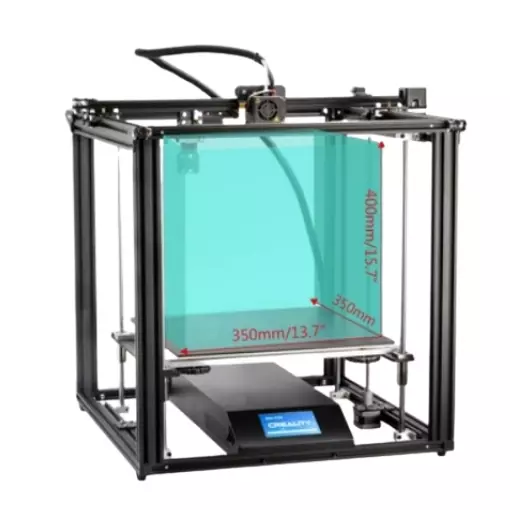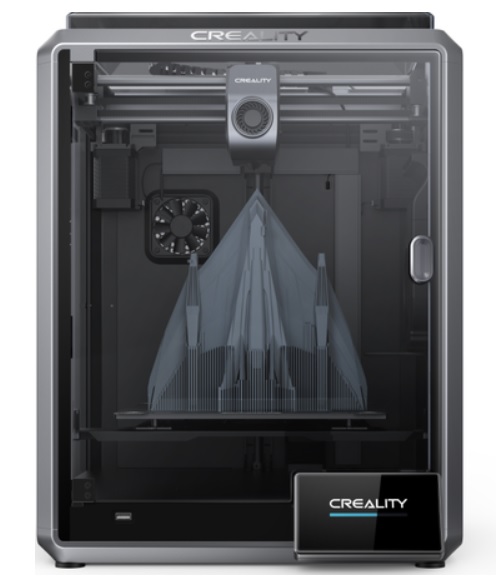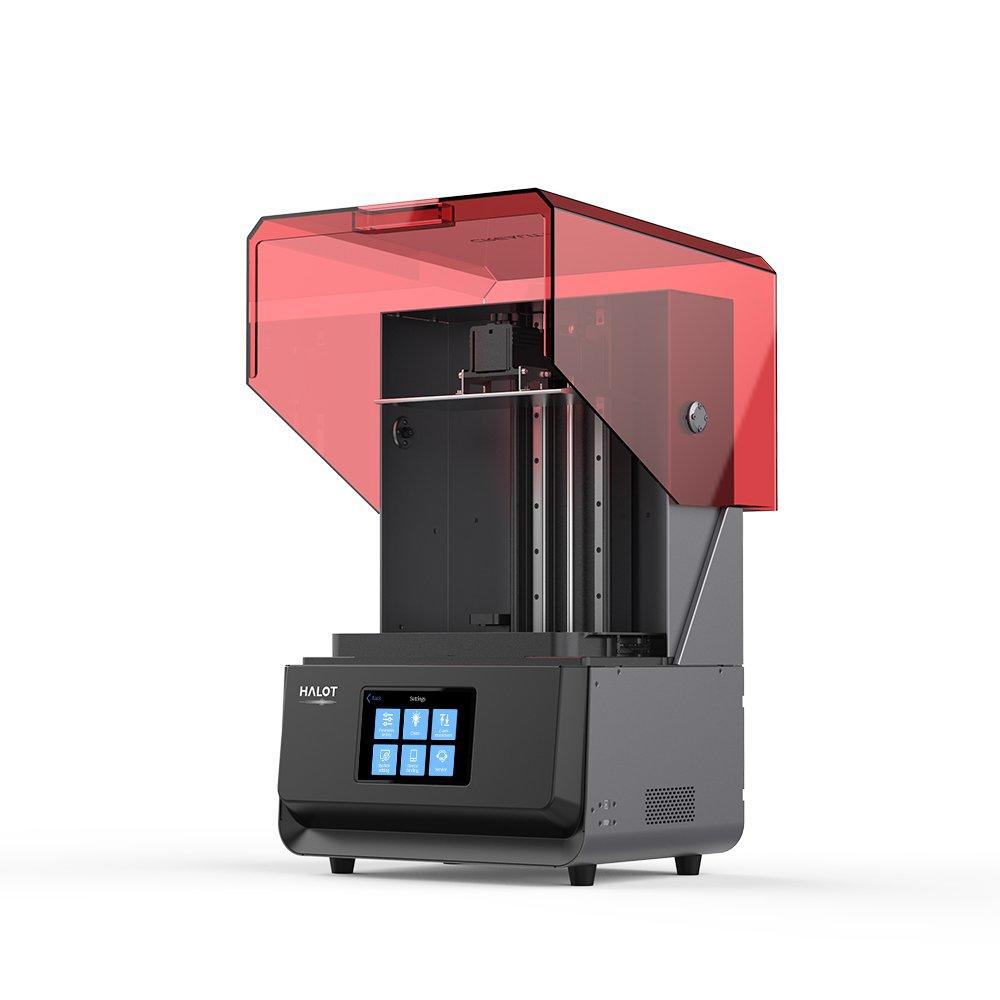Compare Ender 5 Plus vs K1 vs Halot Max
Comparison between the best 3D printers
Choose the best 3D printer at the best price. The cheapest 3D printers are here.
Buy a 3D printer here with 3D Fila.
 |
 |
 |
|
| Model | Ender 5 Plus[BUY Ender 5 Plus] |
K1[BUY K1] |
Halot Max[BUY Halot Max] |
| Printing Material | Filament | Filament | Resin |
| Estimated price | $599,00 | $399,00 | $3000,00 |
| Fabricante | Creality 3D | Creality 3D | Creality 3D |
| Release Year | 2019 | 2023 | 2021 |
| Print Volume [mm] | 350x350x400 | 220x220x250 | 293x165x300 |
| Printer Size [mm] | 632x619x666 | 355x355x480 | 480x387x770 |
| Weight [kg] | 18,2 | 12,5 | 32,5 |
| Power Loss Recovery | YES | YES | NO |
| Maximum Resolution [mm] | 0,1 | 0,1 | 0,03 |
| Processor | 32 bits | ||
| Display | Touchscreen TFT 4,3'' | Display touchscreen 4,3'' | Display touchscreen 5'' |
| Power Supply | 24V / 504W | 110/220V / 350W | |
| Connectivity | SD / USB | Ethernet / USB / Wi-Fi | SD / USB / Wi-Fi |
| Operating systems | Windows, Mac, Linux | Windows, Mac, Linux | Windows, Mac, Linux |
| Date of registration in the system | 2021-04-14 | 2023-04-17 | 2022-11-04 |
| Release date | 2019 | 2023 | 2021 |
| Extra features | The Ender 5 Plus offers a large print volume (350x350x400 mm) and fast assembly. It includes a BLTouch sensor, but with range limitations. It stands out for its dimensional accuracy, although it requires adjustments to the slicer settings. Despite the noise, its integrated design saves space, and includes features such as a filament sensor and power resumption. Ideal for large projects, it requires refinement in the settings for high-quality prints. | The K1 is an extremely fast FDM 3D printer, reaching 600mm/s, 12 times faster than standard models. Equipped with a Core XY system and lightweight print head, it offers energy efficiency and high print quality. It stands out for its dual-gear extruder and quickly heated hotend, as well as dual cooling to prevent warping. Its robust structure ensures stability at high speed, with optimized software to speed up the printing process. | The Halot Max printer stands out for its large print size (293 x 165 x 300 mm) and uses SLA technology. It has an integral light source for improved accuracy and a strong core with an advanced operating system. Its Z-axis module ensures high precision, supported by efficient slicing software. The machine offers online OTA updates and boasts an adjustable layer thickness between 10 and 200 microns. Its XY-axis resolution is 3840*2160, with 0.05 mm accuracy, and an integral 405nm light source. The printer includes a 5" touchscreen and multiple connectivity options, such as USB, Creality Cloud, and HALOT BOX WiFi. With cutting-edge technology, the Halot Max is ideal for printing small models with uniform precision, thanks to its self-developed lighting system and stable printing mechanism, which includes dual linear guides, ball screws, and an intelligent brake system. |
| Support for multiple colors and materials (AMS and CFS) | NO | NO | NO |
Notes * |
|||
| Cost-benefit | 6 / 10 | 8 / 10 | 5 / 10 |
| Hardware | 2 / 10 | 4.8 / 10 | 1.2 / 10 |
| Screen | . | . | . |
| Print volume | 4 / 10 | 3 / 10 | 3 / 10 |
| Performance | 1 / 10 | 5 / 10 | 9 / 10 |
| [BUY Ender 5 Plus] | [BUY K1] | [BUY Halot Max] |
Conclusion |
| When comparing the Ender 5 Plus, K1, and Halot Max 3D printers, various factors such as price, print volume, features, and overall performance reveal distinct strengths and weaknesses for each model. The **Ender 5 Plus**, while the most expensive of the three, offers a substantial print volume and solid dimensional accuracy, making it a suitable choice for larger projects. However, it requires some refinement in settings for optimal print quality and may produce noise during operation. Its cost-benefit ratio is moderate, reflecting a balance between features and price. On the other hand, the **K1** ranks as a great value for those looking for speed and efficiency. It features an innovative design that allows for exceptionally fast print speeds and offers robust performance with a dual-gear extruder and advanced cooling mechanisms. Although its print volume is smaller than the Ender 5 Plus, its price and high performance make it an attractive option for hobbyists focused on quick turnaround times. Lastly, the **Halot Max**, while the most expensive, utilizes SLA technology to produce prints of remarkable detail and precision, particularly for intricate models. Its large print size and advanced features make it impressive, but it may not provide the best cost-benefit ratio for those who do not need high-definition printing for small models. In conclusion, for those prioritizing speed and value, the K1 stands out as the best option. If the focus is on large print volumes and reliable performance for diverse projects, the Ender 5 Plus is a worthy contender. For users requiring the highest level of precision and detail for specific applications, the Halot Max justifies its higher price point, albeit at a steeper cost. Each printer has distinct advantages depending on the user's needs and budget, making the choice ultimately dependent on individual priorities in 3D printing. |

